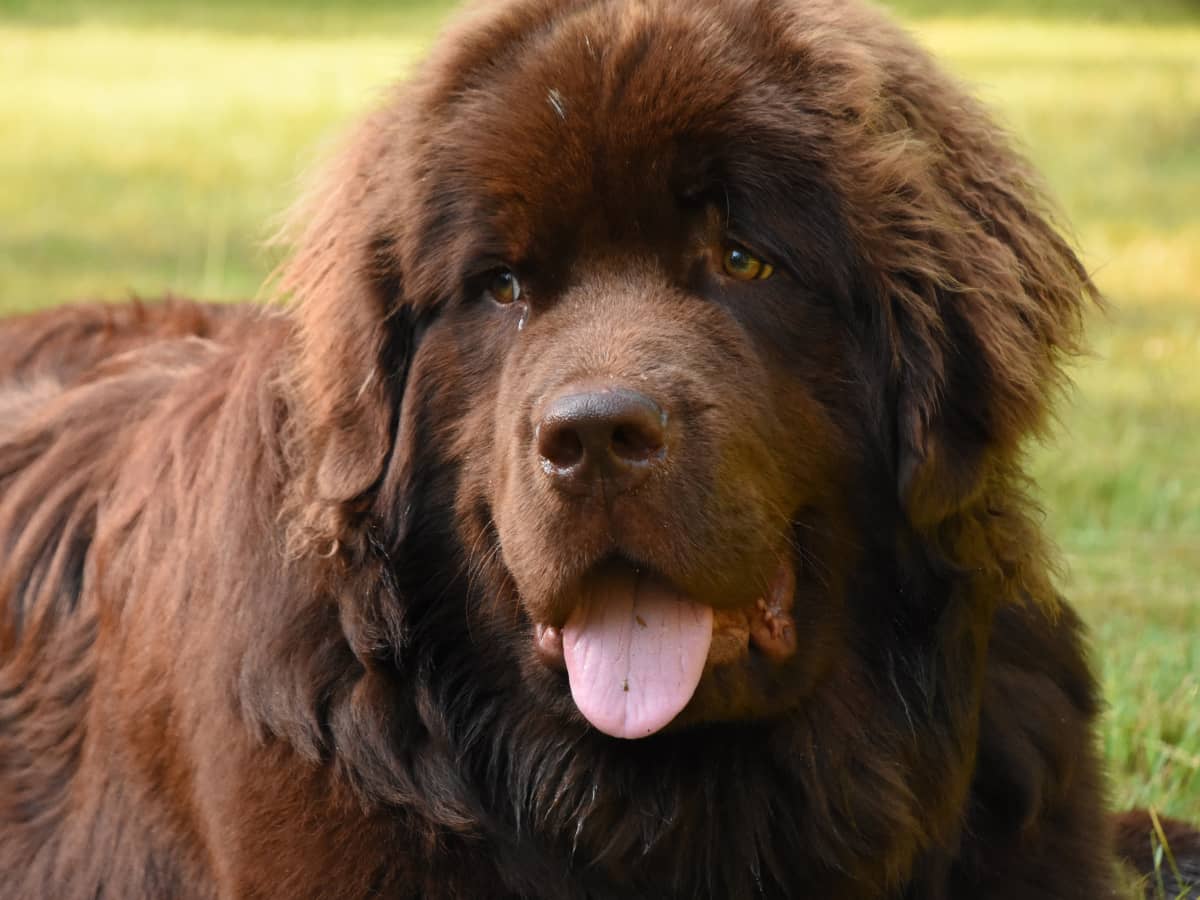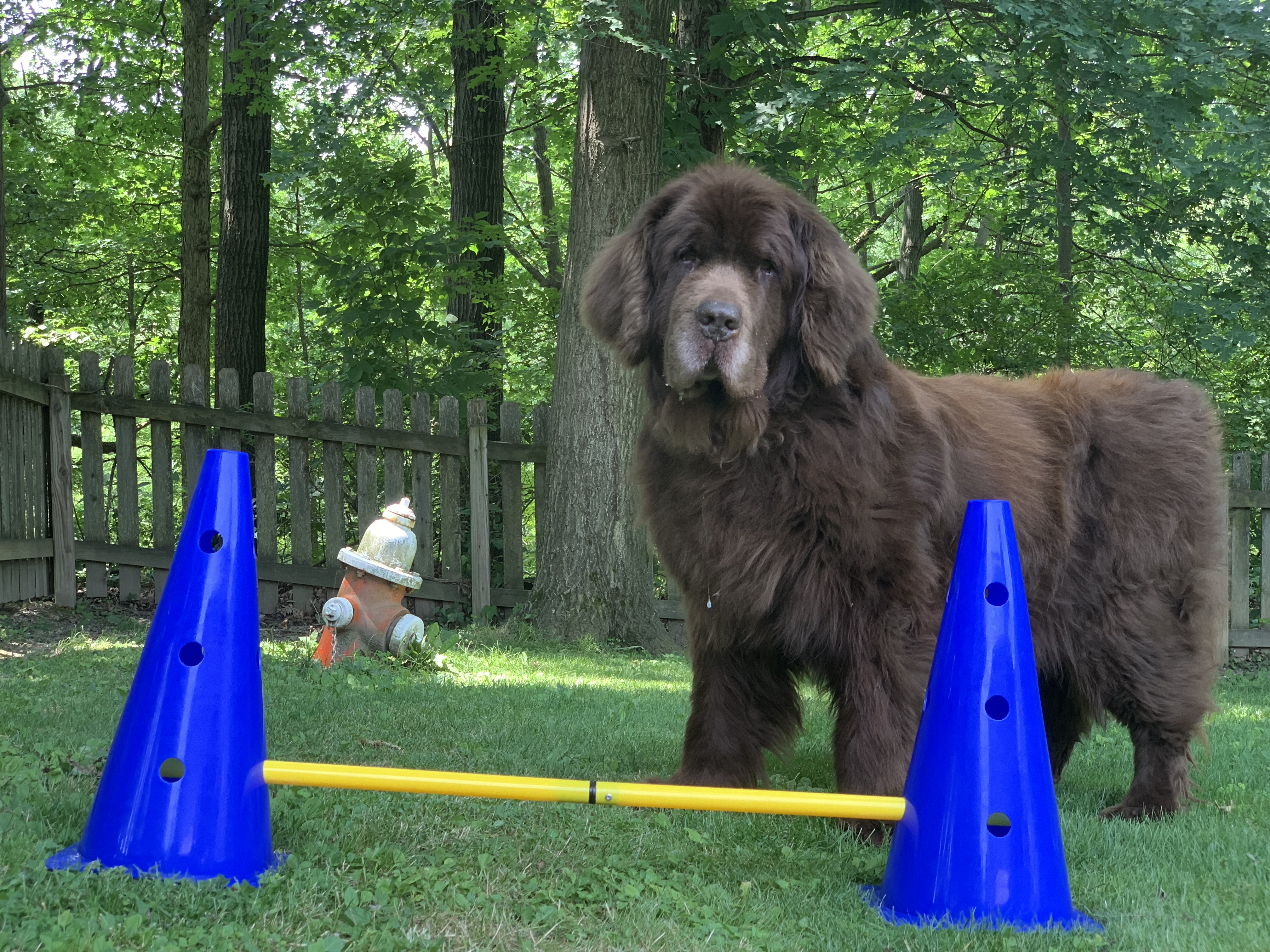Are you considering bringing home a lovable Newfoundland dog but worried about the impact of hot weather on this gentle giant? Despite their thick double coat, Newfoundland dogs can adapt to warmer climates with the right care. As a potential pet parent, it’s crucial to understand how to ensure your Newfoundland stays comfortable and safe in hot weather. From grooming tips to hydration and shade, there are various ways to help your furry friend thrive even in the heat.
In this article, we'll explore the factors to consider and the best practices for helping your Newfoundland dog acclimate to warmer temperatures. Whether you're in a perennially warm climate or experiencing occasional heatwaves, understanding the needs of your gentle giant will ensure a happy and healthy coexistence. Let's dive in and learn how you can make hot weather tolerable for your beloved Newfoundland dog.

Understanding the Breed
The Newfoundland dog, also known as Newfie, is a large and powerful breed known for its gentle nature and exceptional swimming abilities. Originating from the Canadian island of Newfoundland, these dogs were bred to work in cold climates and are equipped with a thick, water-resistant double coat to protect them from the harsh conditions. Despite their cold-weather origins, with the right care, these adaptable dogs can thrive in warmer climates. It's essential to recognize that while they have a dense coat designed for insulation, they also have a remarkable ability to regulate their body temperature, making them more adaptable than one might assume. Understanding the breed's characteristics and needs is the first step in ensuring their well-being in hot weather.
Newfoundland dogs are known for their sweet and gentle temperament, often referred to as "gentle giants." They are highly sociable and loyal, making them excellent family pets. These dogs are generally good with children and other animals, embodying a calm and patient demeanor. Their affectionate nature and protective instincts make them wonderful companions. However, their size and strength require responsible ownership and proper care, especially when it comes to managing their well-being in varying climates. With the right preparations and considerations, Newfoundland dogs can adapt to hot weather and continue to thrive as beloved family members.
The breed's adaptability and strong bond with their owners make them resilient in diverse environmental conditions. While their thick coat is a notable feature, proper management and understanding of their needs can help them acclimate to warmer temperatures. With the right approach, Newfoundland dogs can live comfortably even in hot weather, enriching the lives of their owners with their loving companionship.

Can Newfoundland Dogs Tolerate Hot Weather?
Newfoundland dogs are often associated with cold climates, leading to concerns about their ability to tolerate hot weather. While it's true that their double coat provides insulation against cold temperatures, it also serves as a natural defense mechanism against heat. The dense undercoat and longer outer coat act as insulation, regulating the dog's body temperature by trapping air close to the skin. This unique coat structure not only protects them from cold but also helps in managing their comfort in warmer conditions. However, it's important to note that despite this natural adaptation, extra care and attention are necessary to ensure their well-being in hot weather.
The breed's ability to tolerate hot weather varies from dog to dog, and several factors come into play, including the individual dog's health, age, and overall conditioning. While some Newfoundland dogs may find it challenging to adjust to warmer temperatures, others may adapt more easily. It's crucial for pet owners to observe their dog's behavior and monitor signs of discomfort in hot weather. By understanding the breed's unique characteristics and being attentive to their needs, it's possible to create a comfortable environment for Newfoundland dogs even in hot climates.
Recognizing the signs of heat stress or exhaustion in dogs is essential for proactive care. Excessive panting, drooling, lethargy, and seeking cool surfaces are indications that a Newfoundland dog may be struggling to cope with the heat. It's important to be mindful of these signs and take necessary measures to ensure their well-being. With proper precautions and proactive care, Newfoundland dogs can indeed tolerate hot weather and continue to lead happy and healthy lives.
Potential Health Risks for Newfoundland Dogs in Hot Climates
While Newfoundland dogs have natural adaptations to regulate their body temperature, hot weather can still pose health risks if proper precautions are not taken. Heat-related illnesses, such as heatstroke, dehydration, and paw pad injuries, are potential concerns for dogs in warm climates, including Newfoundlands. The combination of their thick coat and large size can make them more susceptible to heat-related issues, necessitating careful management and preventive measures. Understanding these risks and taking proactive steps to mitigate them is crucial for ensuring the well-being of Newfoundland dogs in hot weather.
One of the primary risks for Newfoundland dogs in hot climates is heatstroke, a life-threatening condition caused by prolonged exposure to high temperatures. Symptoms of heatstroke in dogs include heavy panting, rapid heartbeat, difficulty breathing, excessive drooling, and weakness. If not addressed promptly, heatstroke can lead to organ failure and even death.
Additionally, the breed's thick coat can contribute to overheating, making it essential for pet owners to provide adequate cooling and shade to prevent such conditions. Moreover, dehydration is a common concern in hot weather, emphasizing the importance of ensuring access to fresh water and proper hydration for Newfoundland dogs. Protecting their paw pads from hot surfaces and avoiding strenuous activity during peak temperatures are also vital considerations to prevent injuries and discomfort.
Regular grooming and coat care play a significant role in minimizing the risk of heat-related issues for Newfoundland dogs. Thorough brushing to remove loose undercoat and prevent matting, along with appropriate trimming, can help improve air circulation through the coat, aiding in their natural cooling process. Furthermore, creating a cool and shaded living environment, providing access to fresh water at all times, and scheduling outdoor activities during cooler parts of the day are essential practices for safeguarding the health of Newfoundland dogs in hot climates. By being aware of potential health risks and implementing preventive measures, pet owners can ensure that their gentle giants remain safe and comfortable even in warmer temperatures.
Tips for Keeping a Newfoundland Dog Cool in Hot Weather
Maintaining a comfortable and safe environment for Newfoundland dogs in hot weather requires a proactive approach and thoughtful care. There are several effective strategies and tips that pet owners can implement to help their gentle giants stay cool and content during warmer periods. By incorporating these practices into their routine, pet parents can ensure the well-being of their beloved Newfoundland dogs while enjoying the companionship of these remarkable pets.
Providing Ample Shade and Cool Resting Areas
Creating shaded areas in the yard or outdoor spaces where Newfoundland dogs spend time is essential for protecting them from direct sunlight and excessive heat. Whether it's through natural shade from trees or the use of canopies and shelters, offering cool resting spots allows the dogs to seek relief from the heat when needed. Additionally, providing access to indoor spaces with air conditioning or fans during particularly hot days can further enhance their comfort and help prevent heat-related issues.
Hydration and Access to Fresh Water
Ensuring that Newfoundland dogs have constant access to fresh, cool water is vital for preventing dehydration and maintaining their well-being in hot weather. Pet owners should regularly check and refill water bowls, especially during warm days, and consider using elevated or spill-proof bowls to accommodate the breed's larger size and prevent accidental spills. Adding ice cubes to the water can also help keep it cooler for longer, offering additional relief to the dogs.
Controlled Exercise and Activity
Managing exercise and outdoor activities during the cooler parts of the day, such as early morning or late evening, is important for preventing overheating and exhaustion in Newfoundland dogs. While these dogs enjoy physical activities, it's crucial to adjust the intensity and duration of exercise to align with the weather conditions. Allowing for ample rest breaks and seeking shady areas for playtime or walks can help prevent excessive heat exposure.
Cooling Mats and Accessories
Using cooling mats or pads designed for pets can provide a comfortable and refreshing surface for Newfoundland dogs to rest on. These specialized accessories help dissipate heat from the dog's body and offer a cooling sensation, contributing to their overall comfort in hot weather. Additionally, placing damp towels in shaded areas for the dogs to lie on or providing access to a shallow pool or sprinkler for supervised water play can further aid in keeping them cool.
Monitoring Signs of Discomfort
Being attentive to the behavior and physical cues of Newfoundland dogs is crucial for identifying signs of discomfort in hot weather. Observing their breathing, activity levels, and seeking out cool surfaces are indicators of their comfort or potential stress from the heat. By staying vigilant and responsive to their needs, pet owners can take timely actions to ensure the well-being of their gentle giants.
By implementing these tips and practices, pet owners can actively contribute to maintaining the comfort and health of Newfoundland dogs in hot weather. A proactive and attentive approach to their care not only ensures their well-being but also fosters a strong and fulfilling bond between pet and owner, allowing the gentle giants to thrive in any climate.
Exercise and Activity Management for Newfoundland Dogs in Hot Weather
Newfoundland dogs are renowned for their love of water and outdoor activities, making exercise an integral part of their physical and mental well-being. However, managing exercise and activity routines in hot weather requires thoughtful consideration to protect these gentle giants from the potential risks of overheating and exhaustion. By incorporating appropriate strategies for exercise management, pet owners can ensure that their Newfoundland dogs stay active and healthy while safeguarding them from the challenges of warm climates.

Adapted Exercise Routines
During hot weather, it's essential to adapt the exercise routines of Newfoundland dogs to minimize their exposure to excessive heat. This may involve scheduling walks, playtime, and training sessions during the cooler parts of the day, such as early morning or late evening. By avoiding the peak temperatures, pet owners can provide opportunities for physical activity while reducing the risk of heat-related issues for their dogs. Additionally, seeking out shaded areas for exercise and water-based activities can offer natural cooling and enjoyable experiences for the gentle giants.
Water-Based Activities
Given their natural affinity for water, incorporating water-based activities into the exercise routine of Newfoundland dogs can provide a refreshing and enjoyable outlet for physical stimulation. Whether it's swimming, water retrieval games, or supervised play in shallow pools, these activities allow the dogs to engage in exercise while benefiting from the cooling properties of water. It's important for pet owners to ensure safety and supervision during water activities to prevent any potential risks.
Indoor Exercise Alternatives
On particularly hot days, providing indoor exercise alternatives can offer a comfortable and safe way for Newfoundland dogs to stay active. Interactive toys, puzzle feeders, and indoor training activities can provide mental and physical stimulation while minimizing exposure to heat. Creating indoor play areas with ample space for movement and incorporating short training sessions can help maintain the dogs' exercise routine while accommodating their needs in hot weather.

Monitoring Physical Cues
Observing the physical cues and behavior of Newfoundland dogs during exercise is crucial for identifying signs of heat stress or discomfort. Heavy panting, excessive drooling, reluctance to continue activity, and seeking out cool surfaces are indicators that the dogs may be struggling with the heat. By monitoring these cues and responding promptly to their needs, pet owners can ensure the well-being of their gentle giants during exercise in hot weather.
Proper Rest and Hydration
After exercise sessions, providing ample opportunities for rest and access to fresh water is essential for the recovery and comfort of Newfoundland dogs. Allowing them to rest in shaded and cool areas, offering a drink of water, and monitoring their post-exercise behavior contribute to their overall well-being. Additionally, incorporating cooling accessories or providing access to indoor cooling areas can further aid in their recovery from physical activity in warm weather.
By carefully managing exercise and activity routines, pet owners can promote the health and happiness of their Newfoundland dogs while accommodating the challenges of hot weather. Balancing physical stimulation with safety measures and attentive care allows these gentle giants to enjoy an active lifestyle while thriving in varying climates.
Grooming and Coat Care for Newfoundland Dogs in Hot Climates
The grooming and coat care practices for Newfoundland dogs play a significant role in managing their comfort and well-being in hot climates. Their dense double coat requires regular maintenance and attention to ensure proper insulation, air circulation, and heat regulation. By incorporating effective grooming strategies and coat care routines, pet owners can help their gentle giants stay cool and content even in warm weather, promoting the overall health and vitality of these remarkable dogs.
Regular Brushing and Undercoat Maintenance
Regular brushing is essential for managing the dense undercoat of Newfoundland dogs, particularly in hot weather. Brushing helps remove loose fur, debris, and mats, preventing the buildup of excess heat-trapping fur and improving air circulation through the coat. Using a suitable grooming tool, such as a slicker brush or undercoat rake, can effectively remove the undercoat while promoting the health of the skin and coat. By incorporating a consistent brushing routine, pet owners can contribute to the natural cooling process of the dogs' coat.
Appropriate Coat Trimming
In hot climates, considering appropriate coat trimming for Newfoundland dogs can help enhance their comfort and heat management. While it's important to preserve the insulation properties of the coat, targeted trimming of longer areas, such as the chest, belly, and hindquarters, can promote better air flow and reduce the bulk of the coat. Pet owners should consult professional groomers or veterinarians experienced with the breed to determine the most suitable trimming approach that balances cooling benefits with the protective functions of the coat.
Bathing and Coat Conditioning
Regular bathing and coat conditioning contribute to the cleanliness, health, and comfort of Newfoundland dogs in hot weather. Using a gentle, dog-specific shampoo and conditioner, pet owners can maintain the cleanliness of the coat while promoting its natural luster and texture. Bathing also offers a refreshing experience for the dogs and can help alleviate any discomfort from heat. Care should be taken to thoroughly dry the coat after bathing to prevent moisture retention, which can lead to skin issues.
Paw and Ear Care
In addition to coat care, paying attention to the paws and ears of Newfoundland dogs is essential for overall grooming and well-being. Ensuring that the paw pads are free from debris, trimming excess hair between the paw pads, and applying paw balms or protective wax can help safeguard the paws from hot surfaces and potential injuries. Similarly, regular ear cleaning and inspection for signs of irritation or moisture buildup contribute to the dogs' comfort and health in hot weather.




